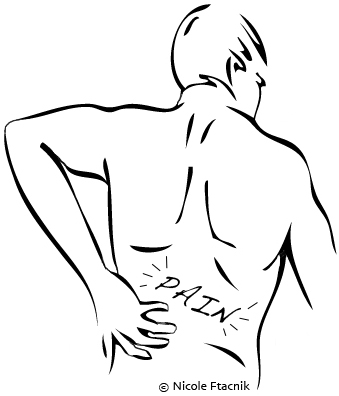Back in June of this year, I wrote a post on TMD: Temporomandibular Disorder, specifying causes and symptoms related to temporomandibular joint pain and dysfunction. This post will be about clenching and grinding, and the effects it can have on your jaw and teeth. Keep in mind that I am obviously not trained in dentistry, which is why I will publicize a top-notch dentist in my area; one that I have been going to for years, and refer my clients to when the need arises. More on him later though.
Clenching and grinding, also known as bruxism, has caused some problems for me over the years. Not only has it seriously affected the musculature around my jaw, it has also given rise to non-natural contours and slight fracturing in my teeth.
Bruxism can be defined as either diurnal or nocturnal: diurnal is during the day, often stress related and easier to treat; nocturnal is at night, not under conscious control, which in turn can be a devastating habit causing great pain in the TMJ and also ruin the teeth.
Sleep bruxism often exerts remarkably powerful forces on teeth, gums, and joints. One estimate puts it at three times the forces generated during chewing (Castaneda, 1992, p. 46), while another puts it at ten times, powerful enough to crack a walnut. — Dr. Moti Nissani, 2000
According to the link directly above, Dr. Nissani also states that bruxism may lead to the following…
- Sensitive, worn-out, decayed, fractured, loose, or missing teeth (McGuire and Nunn, 1996).
- Broken down enamel, and in long-term bruxers, may reduce teeth to stumps.
- Yellowish and softer dentin as opposed to white enamel cover.
- The back teeth losing their cusps and natural contours; instead of appearing flat, they look as if they were worked over with a file or sandpaper.
- Bridges, crowns, root canals, implants, partial dentures, and even complete dentures.
By 40 or 50 years of age, most bruxers . . . have worn their teeth to the degree that extensive tooth restorations must be performed. — Christensen, 1999
Now back to the AWESOME dentist I briefly mentioned at the beginning of my post. Dr. Alex M. Della Bella has been my dentist for 10+ years; helping me with anything from shaping my somewhat jagged-edged front teeth to making an occlusal guard for the clenching and grinding. In addition to me treating my own “adaptively shortened” jaw muscles intra-orally to help with TMD related pain (I’m trained in that), I can’t express enough how much an occlusal guard has helped me in preventing further damage to my pearly whites—those coming to fruition via the ZOOM! In-Office Whitening process.

If you live in Cincinnati, Ohio—or the surrounding areas—and feel you suffer from bruxism, I highly recommend you contact Dr. Della Bella’s office at 513.793.1977 for support in getting things under control. You can also request an appointment directly through this link. If you’re looking for other dentistry services, Dr. Della Bella also specializes in the following…
- Cosmetic Dentistry – Tooth Bonding, Porcelain Veneers, Whitening, Tooth Jewelry, ZOOM! In-Office Whitening
- Restorative Dentistry – Crowns, Partial Crowns, Tooth Colored Resin Restorations
- Preventative Dentistry – Athletic Mouthguard, Fluoride, Fluoride Varnish, Occlusal Guard, Oral Hygiene Instruction, Routine Maintenance, Sealants, Velscope Oral Cancer Examination
- Sports Dentistry – Athletic Mouthguard, Injury Management Card, Pro Football Program, Traumatic Injury Management, Under Armour Performance Mouthwear
- Sleep Disorder Management – Tap Appliance, Somnomed Appliance
- Reconstructive Dentistry – Fixed Replacement of Missing Teeth (Bridges), Full and Partial Removable Dentures, Implants
- Orthodontics – Invisalign
- Periodontal Therapy – Arestin, Oraqix, Scaling and Root Planing, Soft Tissue Management
In closing, between Dr. Della Bella’s 25+ years in the dental field, and mine—hmmm… only about five years ;-)—in advanced soft tissue therapy for TMJ pain and dysfunction, I feel we make a great team in helping people manage their pain and dysfunction related to TMD. Here’s what he has to say…
Temporomandibular joint pain and dysfunction is best handled in a very conservative manner by competent, experienced professionals. When an experienced dentist teams up with an experienced therapist, like Nicole, the level of success attained is usually enhanced because the problem can be addressed using various, conservative methods.
As always, I hope you find this information informative!
* * * * *
“Neutral balance alignment is key to becoming pain free!”™ ~ Me

